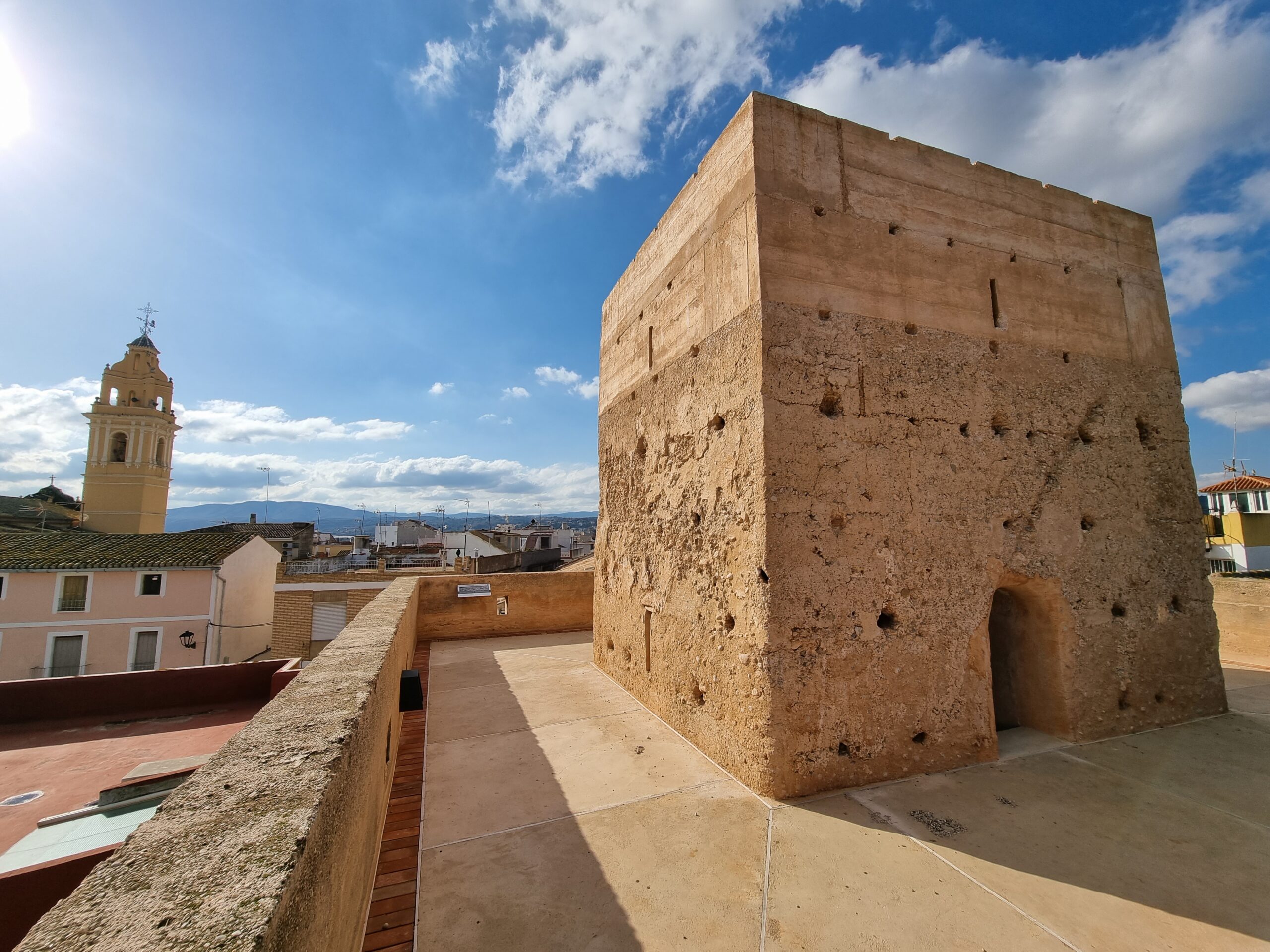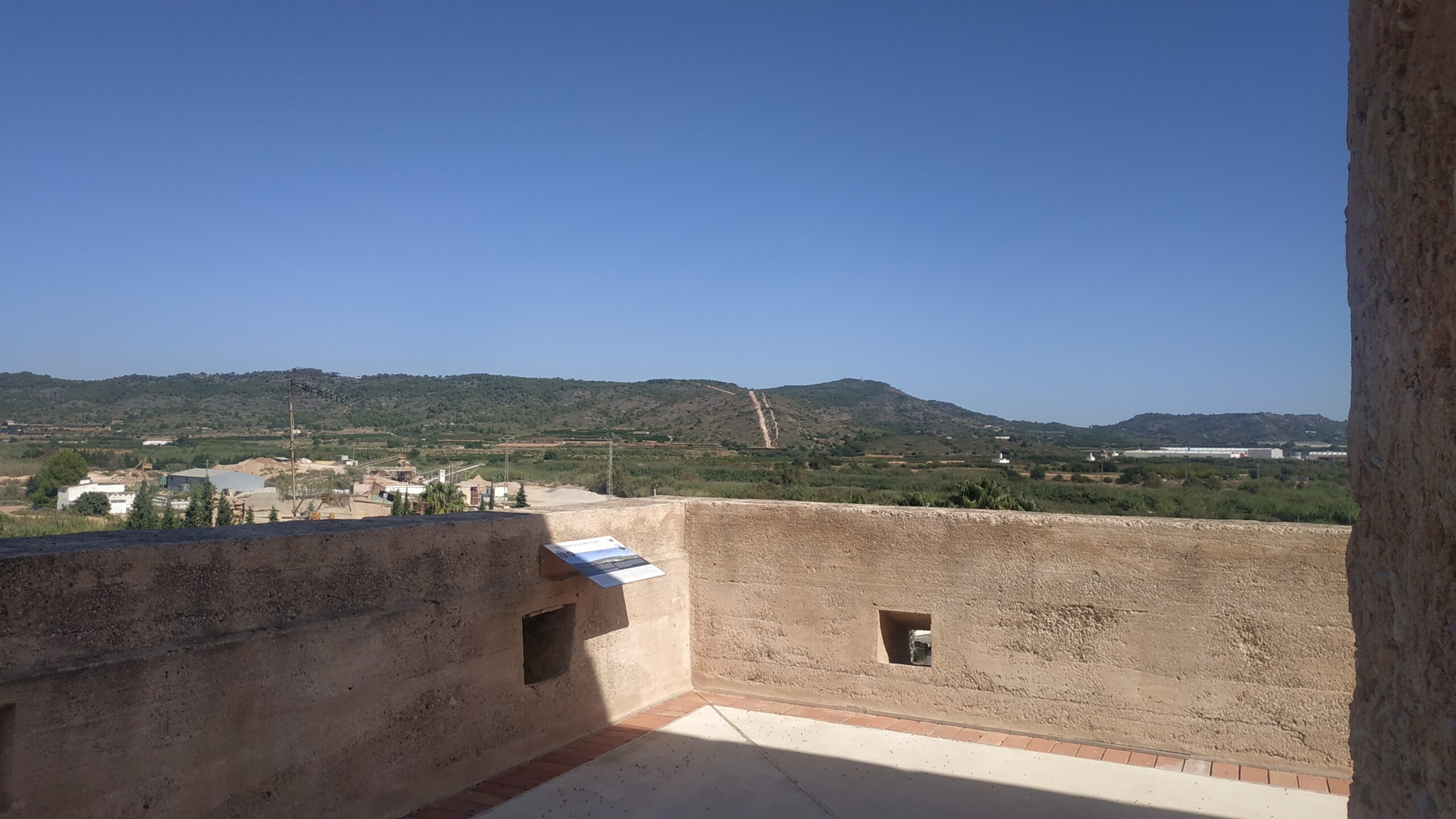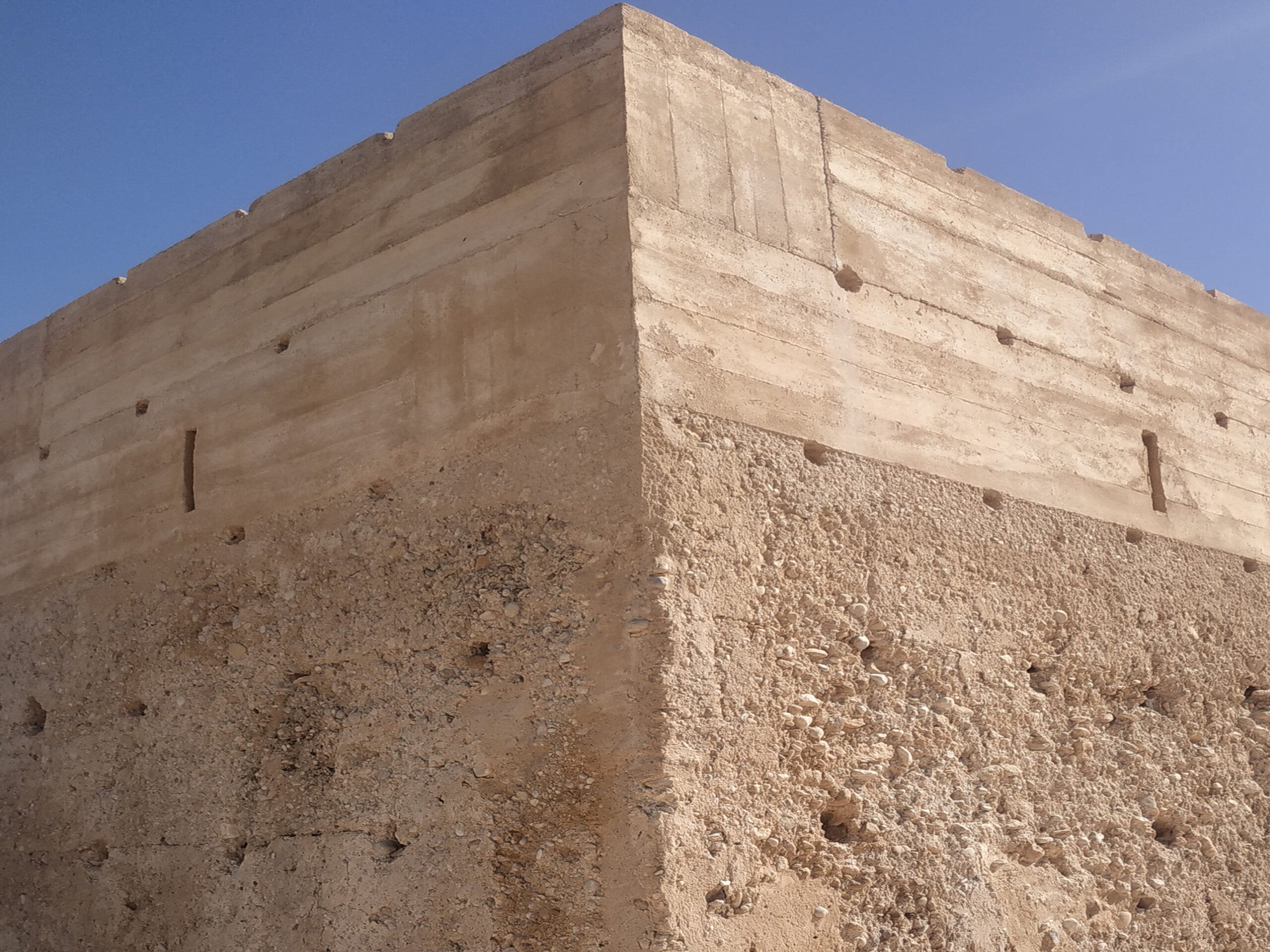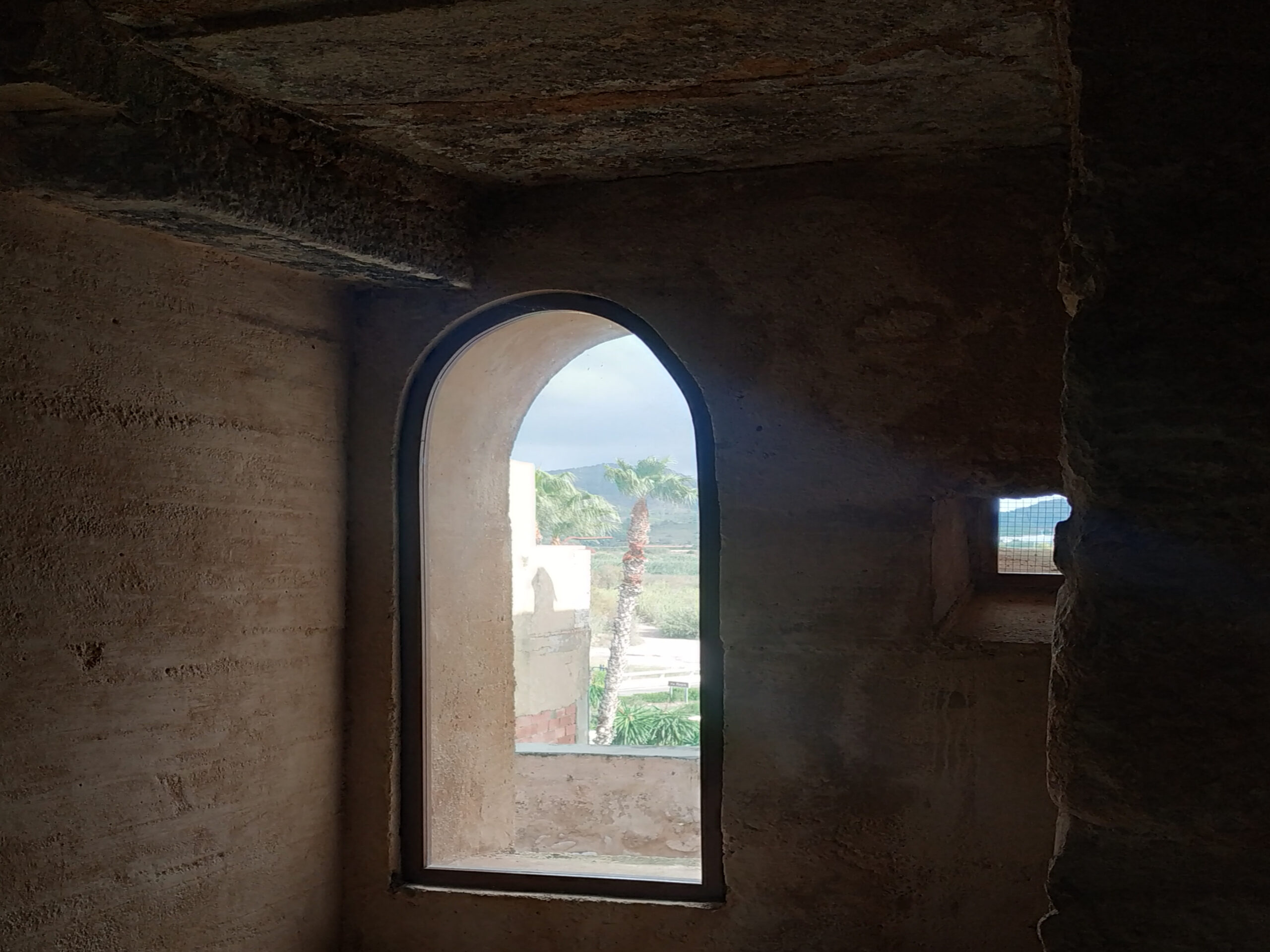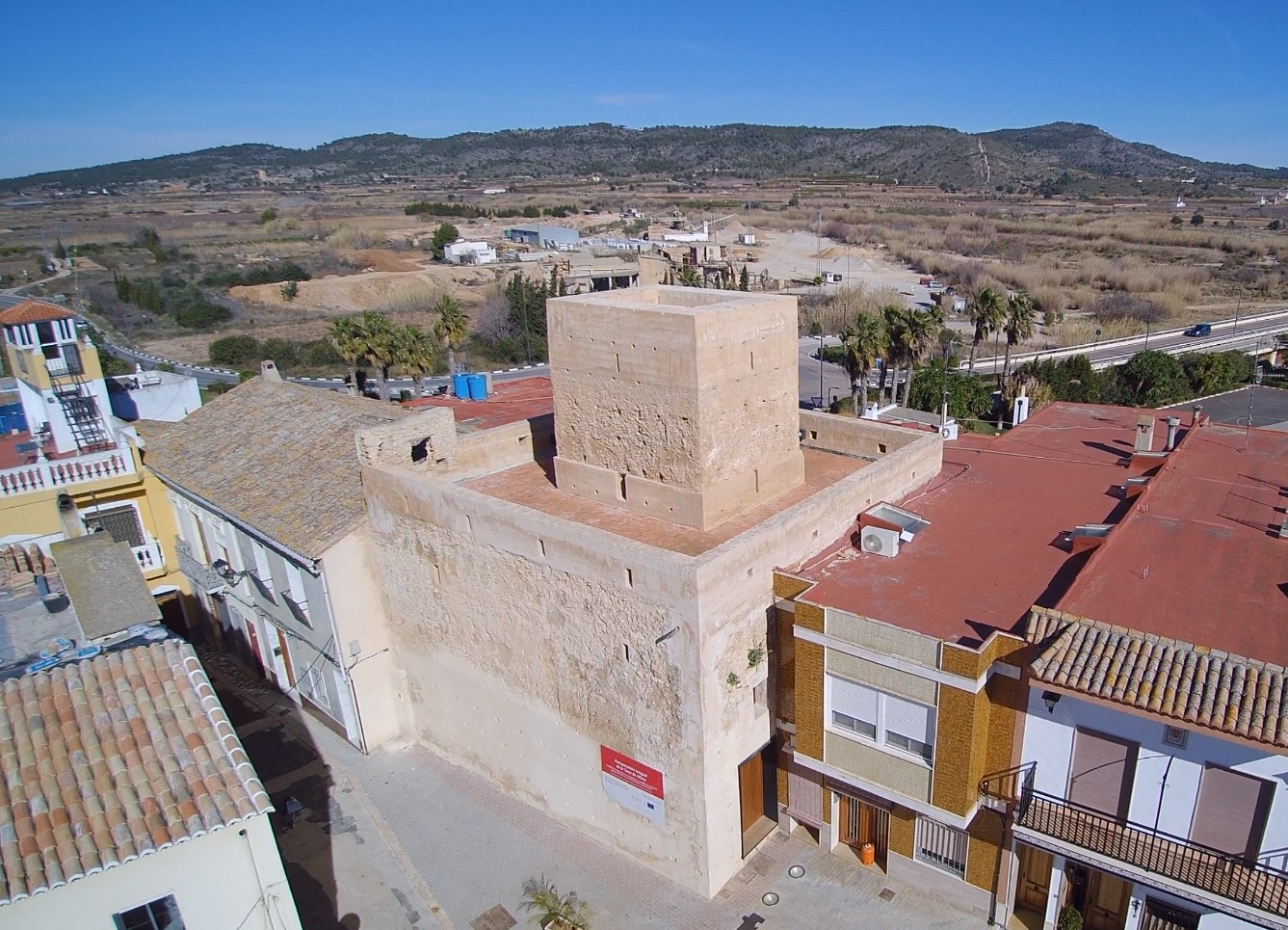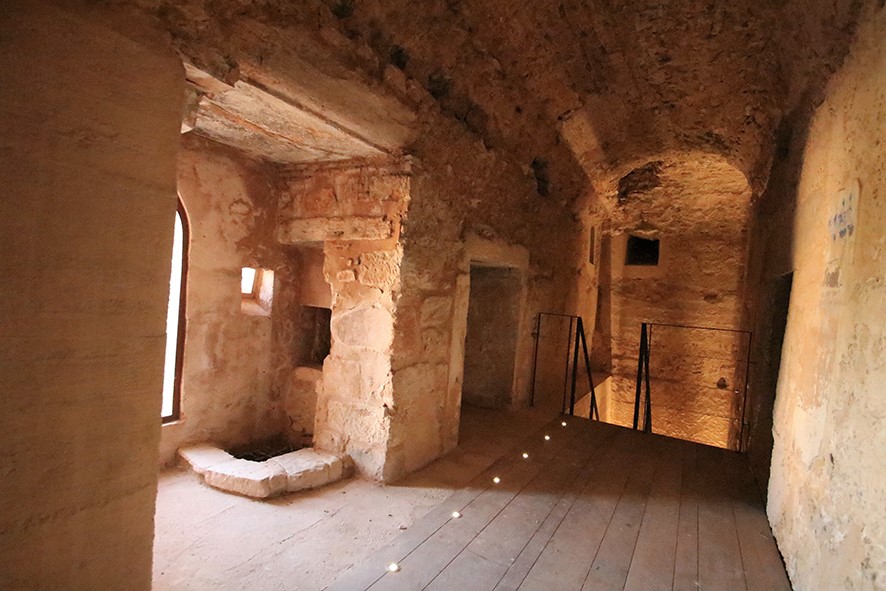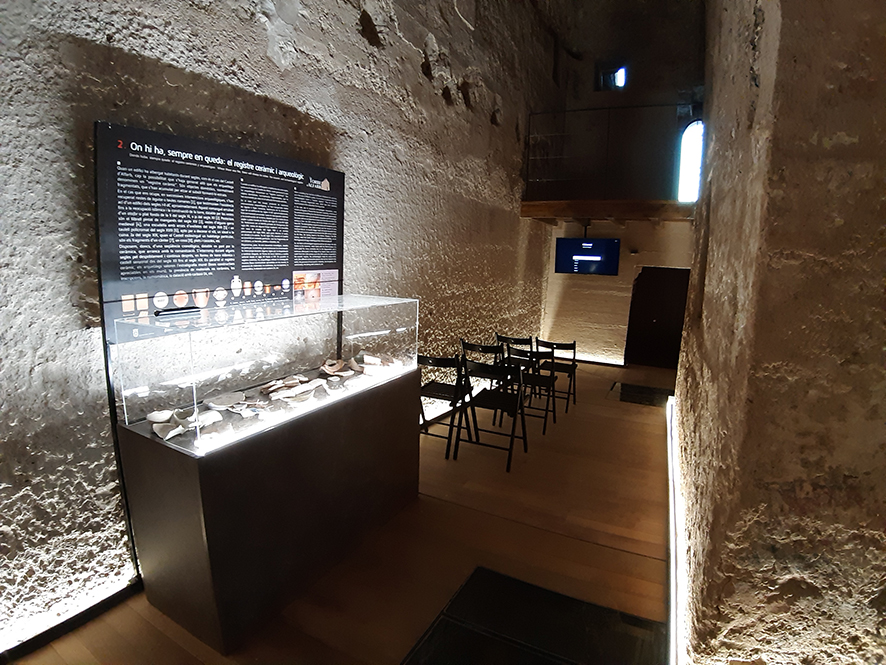CASTILLO DE ALFARP
In the years 1172-1240, the defensive towers of the farmhouse, which protected the population and wealth (diners, collites, guanyat in some cases), protected them in a recently defended by a slender tower, in Xarq al-Andalus. The farmhouse is going to fortify against the incursions and looting that the feudals of an expanding Crown of Aragó will perpetrate, both on vespres and during the conquest of the Valencian territory.
The Castell d’Alfarp -which strategically controlled the Magre river pass, to anar l’Albufera, and the Islamic road from Xàtiva to Llíria- was one of these Andalusian towers, from the 12th century. I was taller than the current one. It would be with the Torre d’Espioca (Picassent), about 18 m high, with which it shares some characteristics. It was crowned by merlets and defended by a 3.45 m high perimeter barbican or wall, similar to that of the nearby Alèdua tower (Llombai). It is possible that these reinforcements date from a reform of the 13th century, on the eve of the feudal conquest. Potser could dispose of some adjacent clos or albacar, apt to protect bestiar.
When Jaume I was going to agree with the Muslims of La Ribera to be incorporated into the colonial and feudal kingdom of Valencia, he was going to donate the village and the tower of Alfarp to the brotherhood of the bishop of Saragossa, the knight Però de Montagut (13th century), Characters with sufficient resources to transform the tower into a “castell” or stately fortress. To this effect, he is going to recreate the walls of the barbican fins at 4.50 m and they are going to link between the tower and the barrel vaults. The result will be a strong box or cubic feudal granary (12 x 12 m in plan, with a towering tower in the center), preserving the third part of the collites that the lordship demanded of the Moorish vassals, as can be seen in an inventory of 1288.
Subsequently, the lordship will be acquired by Pere de Centelles in 1353, who will also establish himself as lord of Alèdua, Catadau i Llombai. It will be a farmhouse of Moorish fins to the seua expelled at the beginning of the seventeenth century. In 1611, after the expulsion of the Moors, which entailed a severe depopulation, the letter of repopulation was obtained for 32 Christians with their respective families.
They will also be their lords the Borja family, dukes of Gandia, and duke d’Osuna, fins to the extinction of the lordships in 1837.
The year 2021 has finalized the last phase of the recovery and fitting out of the tower.
It has been possible during the term thanks to a subsidy for the protection, conservation or recovery of good Valencian cultural heritage and its valued value, co-financed by the FEDER Operational Program of the Valencian Community 2014-2020.
This performance has a cost of €121,000, an eligible expense of €100,000, financed 50% by FEDER Funds.
The tower can be visited by the disabled and diumenges from 12 to 2 pm or by prior reservation by email: turisme@alfarp.es or by phone at 670 377 191
DETAILS
for the entire family
Plaça de Dalt, 7 - Alfarp (Valencia), España
962550391 / 670377191
turisme@alfarp.es

